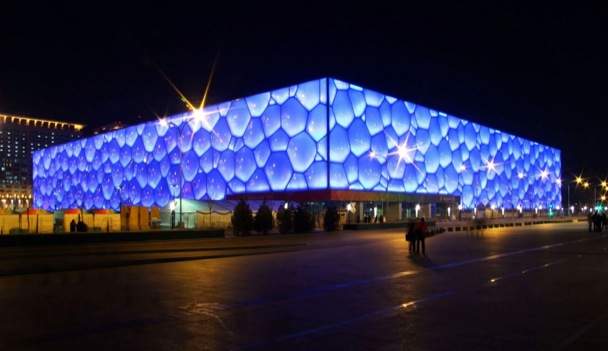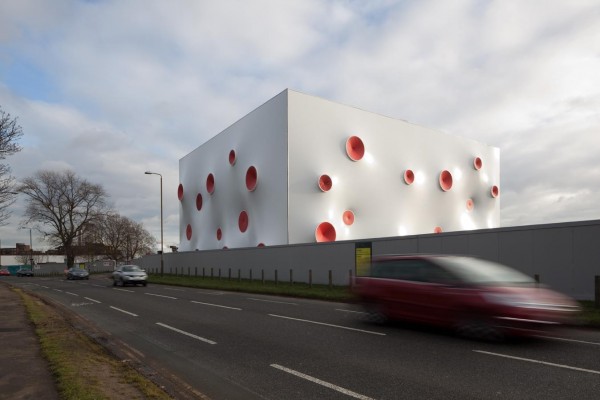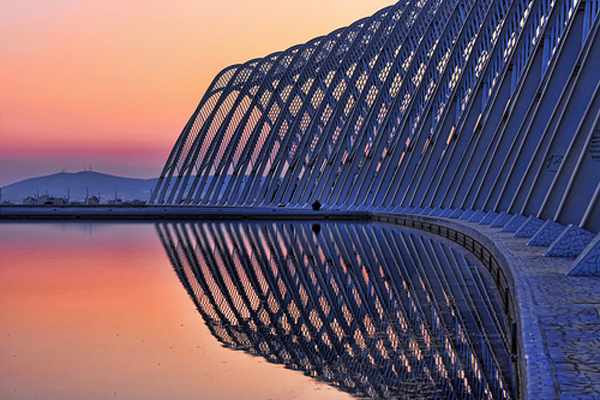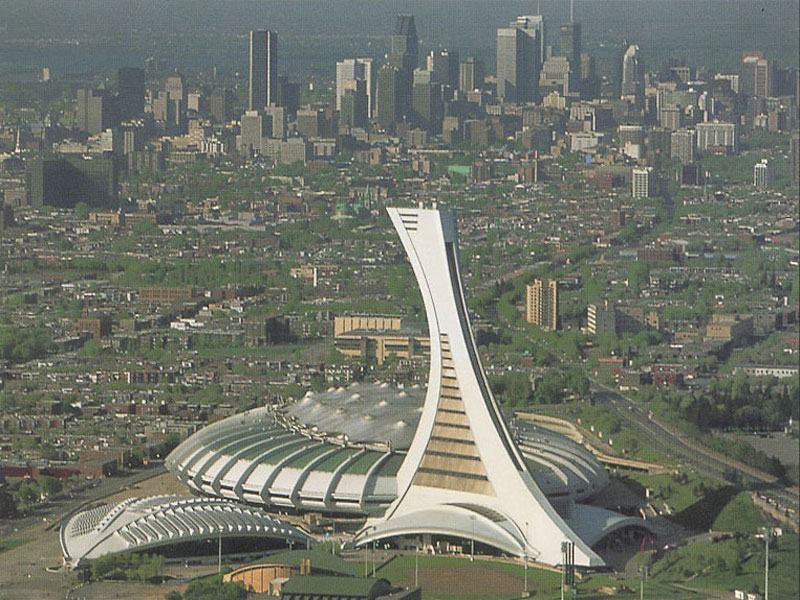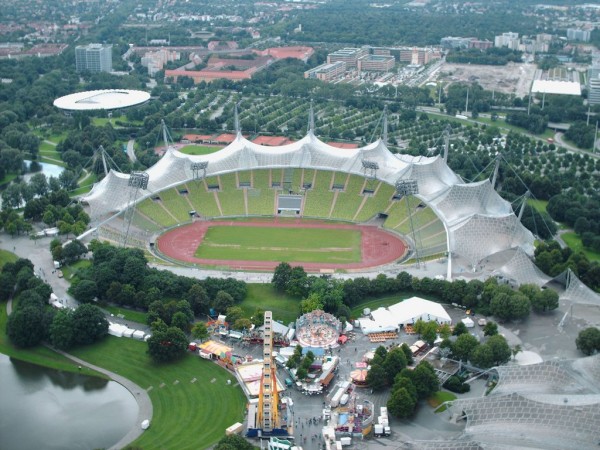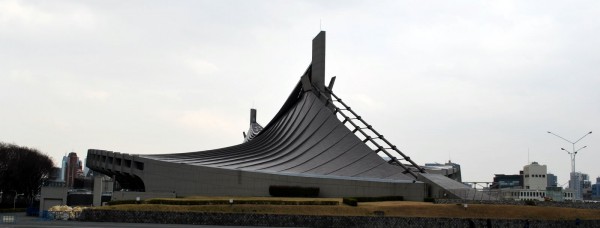The Most Magnificent Stadiums in Olympic History
Host cities compete to see who can construct the most awe-inspiring sporting amphitheatres.
The Summer Olympic Games is a prime opportunity for the world's best architects to showcase their creativity and ingenuity by designing some of the most iconic and celebrated buildings and stadiums in the world. With almost every eye in the world stopping to admire the intense competition between elite athletes from all over the globe, host cities compete to see who can construct the most awe-inspiring sporting amphitheatres.
Here is Concrete Playground's selection of the most beautifully designed venues in modern Olympic Games history.
London 2012 Shooting Venue
Designed by German innovators Magma Architecture, the 2012 Olympic Shooting Venue consists of three demountable pavilions with massive coloured bullet holes. Appropriately, for a shooting event, this unique venue is located at London's Royal Artillery Barracks and will be disassembled following the games and taken to Glasgow for the 2014 Commonwealth Games. An estimated 104,000 spectators will cheer on their nations' finest marksmen in these giant tents.
London 2012 Aquatics Centre
The ultra-modern indoor facility for the swimming, diving and synchronised swimming events at this year's Olympics is a chic construction designed by Pritzker Prize-winning architect Zaha Hadid. The unique 6-board diving platform used a massive 462 tonnes of concrete during construction, and the three pools in the complex hold around 10 millions litres of water.
Beijing 2008 National Stadium
Affectionately known as the 'Bird's Nest', Beijing's Olympic cathedral cost a whopping $423 million to build. The breathtaking design by Swiss Architecture firm Herzog & de Meuron was inspired by a study of Chinese ceramics and consists of an enormous concrete bowl surrounded by crisscrossing steel beams that give the stadium its distinctive appearance. 17,000 workers were employed to build the stadium with The Times reporting in January 2008 that ten workers died during its construction, a claim that was vehemently denied by the Chinese Government.

Beijing 2008 Aquatics Centre
Known colloquially as the water cube (despite it actually being a cuboid), the Beijing Aquatic centre was an absolute marvel at the 2008 Olympic Games. Many believe that the greater depth of the pools and their perforated gutters help make the pool the fastest in the world, which is backed up by the fact that 25 world records were broken within its bubbly and vibrant walls in 2008.
Athens 2004 Olympic Sports Complex
Originally built in 1982, the Athens Olympic Sports Complex had itself a massive revamp in preparation for the 2004 games. This refurbishment, led by Spanish architect Santiago Calatrava, transformed the once functional centre into a majestic international facility, with the addition of the awe-inspiring arch seen above and an enormous retractable roof across the Olympic Stadium.
Montreal 1976 Olympic Stadium
The elaborate, multi-purpose facility of the Montreal Olympic Stadium was designed by Roger Taillibert and used as a venue for a number of events during the games, such as the opening and closing ceremonies, athletics, football and equestrian. The Montreal Tower is the tallest inclined structure in the world at 175m and helps open the retractable roof of the stadium.
Munich 1972 Olympiastadion
Günther Behnisch and Frei Otto's 80,000 capacity stadium was considered revolutionary at the time of its construction in 1968 due to the giant sweeping canopies of acrylic glass, which were intended to be imitations of the Alps and representative of the new, democratic Germany. The construction of the stadium was made significantly easier due to the large pits that were made by bombings in Munich during World War II.
Tokyo 1964 Yoyogi National Stadium
The suspension roof of the Yoyogi National Stadium helped make Tokyo's Olympic design by Kenzo Tange both an architectural icon and an Olympic favourite. Tange managed to seamlessly intertwine both modern Western style and traditional Japanese culture to create the fluid, draping roofs of this dynamic structure.
Athens 1896 Panathinaiko Stadium
Unlike the ultra-modern stadiums of today in which the boundaries of gravity and taste are continually pushed, the first stadium of the modern Olympic Games was designed as a monument to the magnificence of the Ancient Greeks and the Olympics of yesteryear. Reconstructed from the remains of an ancient stadium estimated to be over 2500 years old, the Panathinaiko Stadium is the only major sports venue made entirely of white marble. In classical times the stadium was built and used in honour of the Greek Goddess Athena, while today it is primarily used for commemorative events and special musical performances by the likes of Bob Dylan and Tina Turner.
